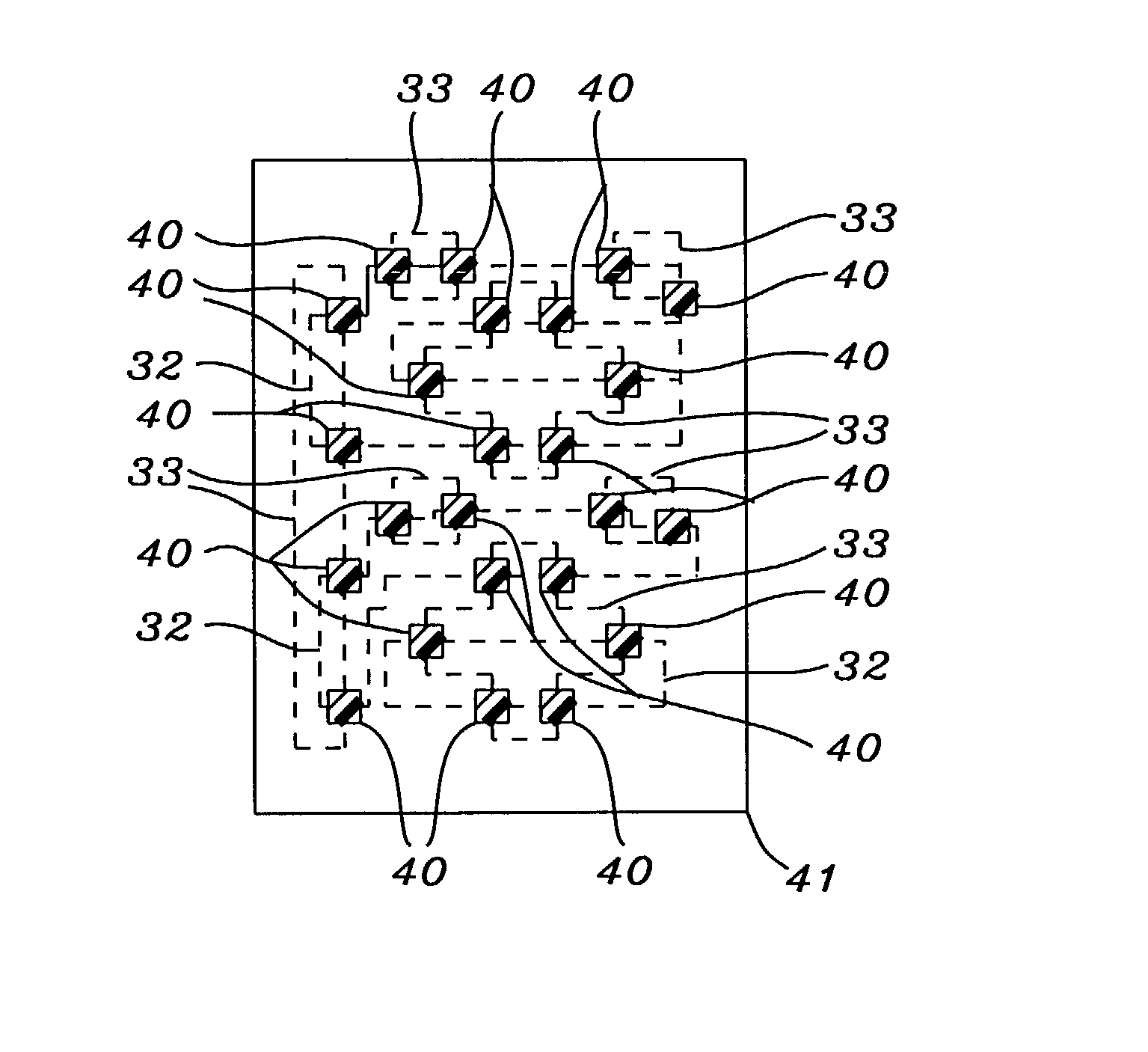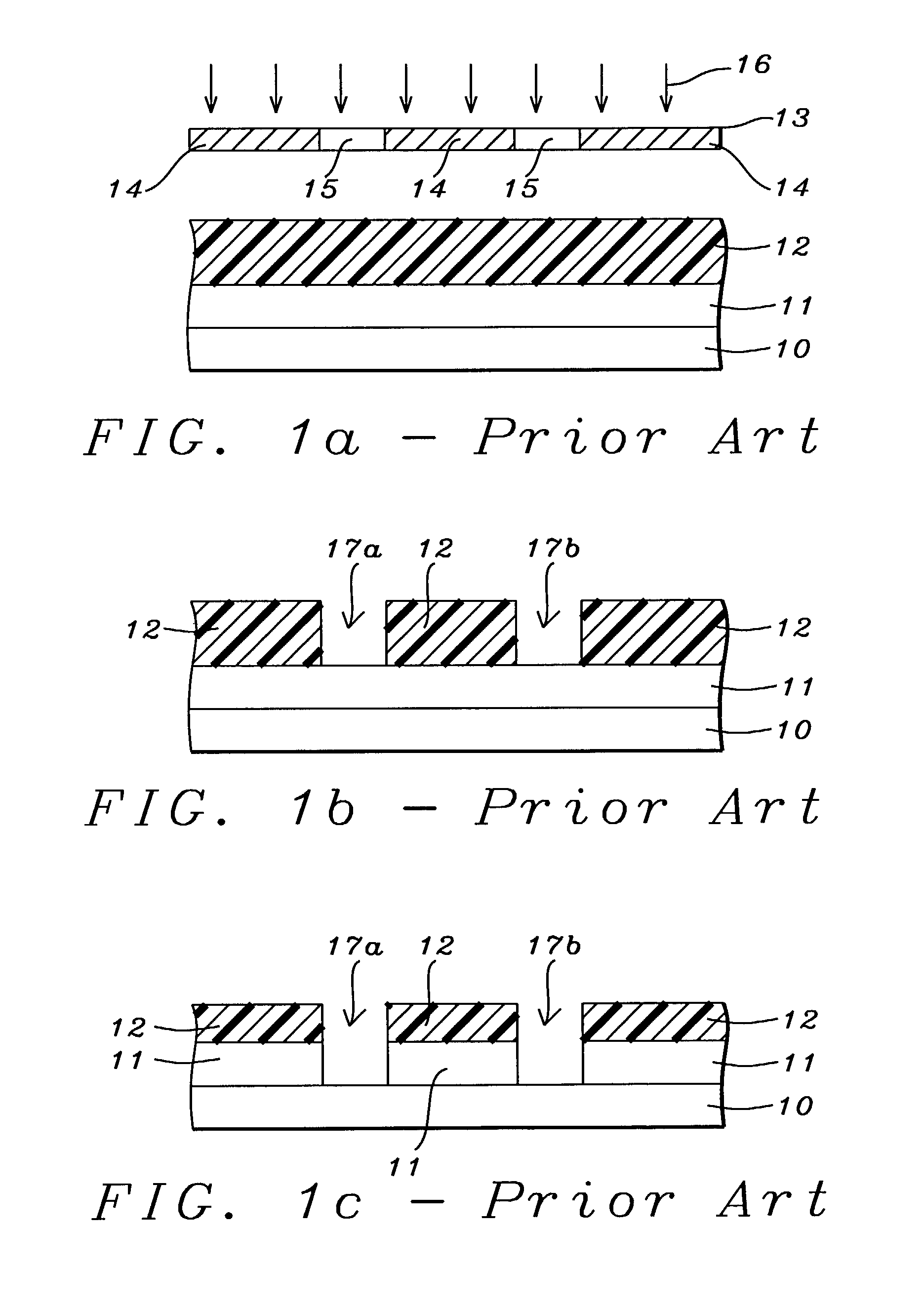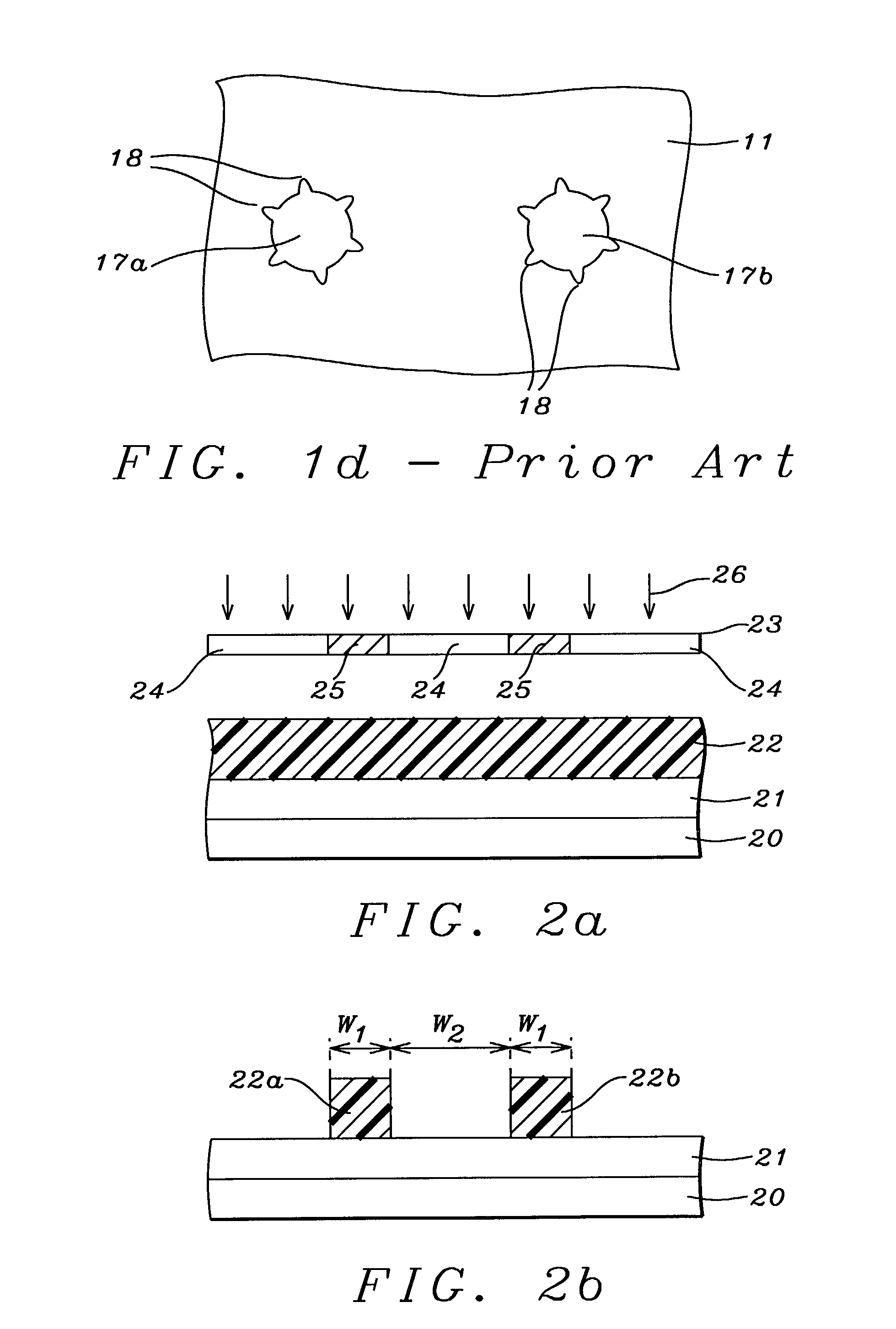Complementary replacement of material
a technology of composite materials and etching steps, applied in semiconductor devices, solid-state devices, decorative arts, etc., can solve the problems of reducing the ability of resists to serve as etch masks for subsequent etch steps, increasing the difficulty of patterning and etching steps, and requiring a higher degree of control, so as to achieve high contrast resist lines and reduce the effect of etching steps
- Summary
- Abstract
- Description
- Claims
- Application Information
AI Technical Summary
Benefits of technology
Problems solved by technology
Method used
Image
Examples
first embodiment
[0030]FIGS. 2a-2e are drawings showing a method of forming a pattern with high resolution contact holes and transferring the pattern into an underlying layer according to the present invention. Referring to FIG. 2a, a dielectric layer 21 is formed on substrate 20. Substrate 20 may contain conducting layers and other dielectric layers (not shown). Dielectric layer 21 is typically SiO2 or a low k dielectric material such as fluorine doped SiO2, carbon doped SiO2, fluorosilicate glass (FSG) or Applied Materials' “Black Diamond” that is deposited with a CVD or plasma enhanced CVD (PECVD) technique. Optionally, commercially available spin-on dielectrics such as FLARE from Allied Signal and SiLK from Novellus can be used.
[0031]A resist solution is coated and baked to form layer 22. Resist 22 is preferably a positive tone composition. In a positive tone resist, exposed regions become soluble in a developer and are washed away while unexposed regions remain on the substrate. With a negative...
second embodiment
[0042]In a second embodiment the present invention is a method of forming high resolution polysilicon gates with smooth sidewalls as illustrated in FIGS. 7a-7d. A substrate 70 is provided in FIG. 7a that is comprised of a material such as silicon that contains active regions separated by isolation regions (not shown). A gate dielectric layer that normally consists of SiO2 which is grown on active regions is not shown in order to simplify the drawing and focus attention on the key features of the present embodiment. A polysilicon layer 71 is deposited by conventional means such as a CVD technique. Optionally, an anti-reflective coating (ARC) which is not shown is coated on the polysilicon 71 to control reflectivity during a subsequent patterning step. A resist solution is coated on the polysilicon layer 71 and baked to form resist layer 72.
[0043]The resist 72 is exposed with radiation 76 comprised of one or more wavelengths in the range of about 13 nm to about 500 nm through mask 73....
third embodiment
[0049]In a third embodiment the present invention is a method of forming trenches such as in a via first dual damascene process as depicted in FIGS. 8a-8d. A substrate 80 is provided in FIG. 8a that is comprised of dielectric and conducting layers (not shown). An etch stop layer 81 consisting of a material such as silicon carbide, silicon nitride or silicon oxynitride is deposited by a CVD or PECVD method. A dielectric layer 82 is deposited and via holes 83a and 83b are formed by conventional methods. Although two holes are shown in this example, the via hole pattern in layer 82 can include dense hole regions and isolated hole regions. Dielectric layer 82 is selected from a group including SiO2 and low k dielectric materials such as fluorine doped SiO2, carbon doped SiO2, FSG, and borophosphate silicate glass. Optionally, an etch stop layer (not shown) may be deposited on layer 82 prior to via hole patterning to serve as an etch stop for a subsequent chemical mechanical polish (CMP)...
PUM
| Property | Measurement | Unit |
|---|---|---|
| Wavelength | aaaaa | aaaaa |
| Wavelength | aaaaa | aaaaa |
| Electrical resistance | aaaaa | aaaaa |
Abstract
Description
Claims
Application Information
 Login to View More
Login to View More - R&D
- Intellectual Property
- Life Sciences
- Materials
- Tech Scout
- Unparalleled Data Quality
- Higher Quality Content
- 60% Fewer Hallucinations
Browse by: Latest US Patents, China's latest patents, Technical Efficacy Thesaurus, Application Domain, Technology Topic, Popular Technical Reports.
© 2025 PatSnap. All rights reserved.Legal|Privacy policy|Modern Slavery Act Transparency Statement|Sitemap|About US| Contact US: help@patsnap.com



